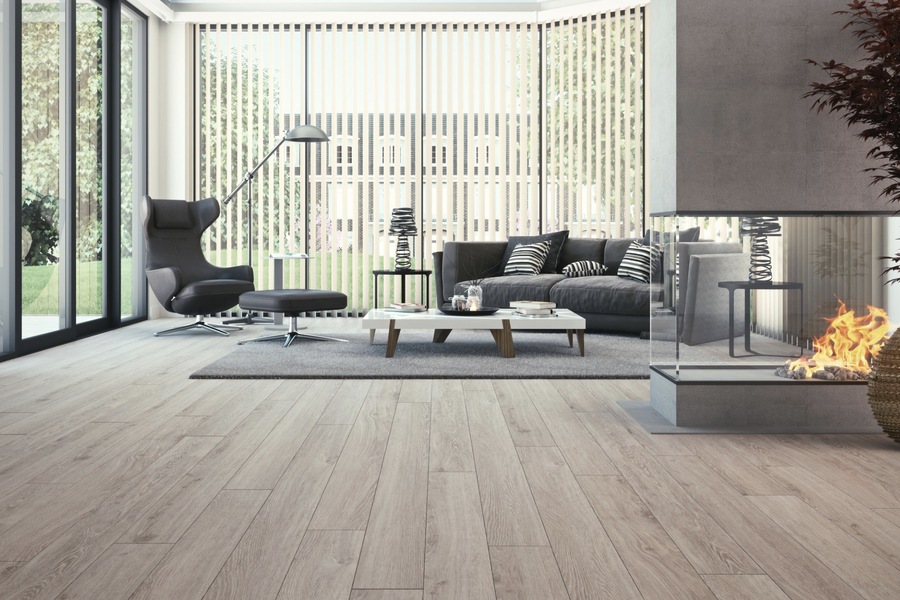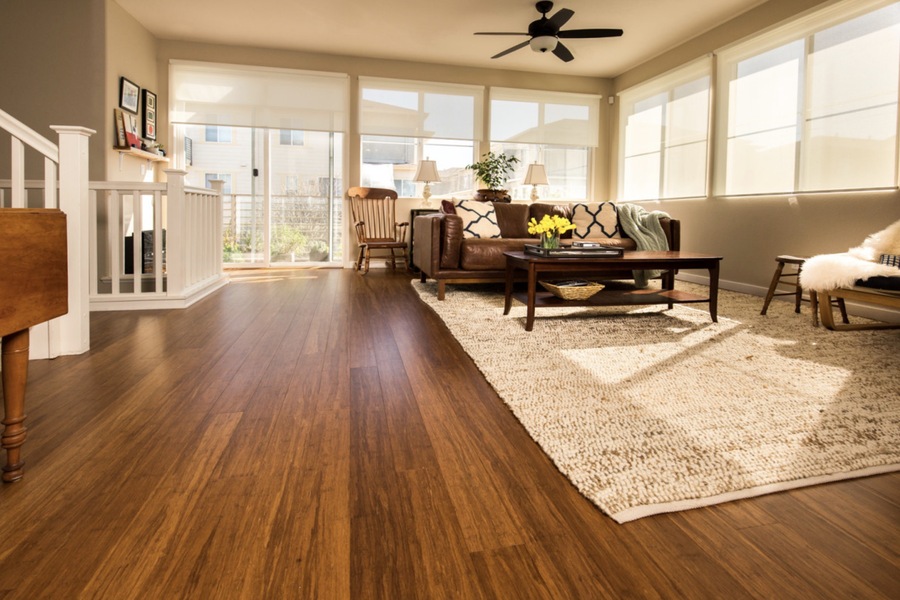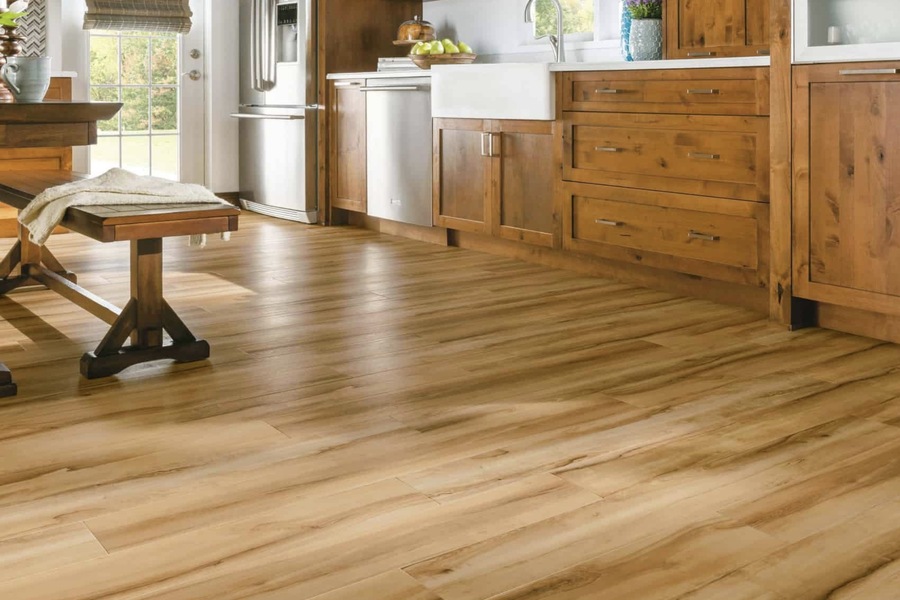
Comprehensive Guide to Flooring: Types, Advantages, and Disadvantages
When it comes to choosing the right flooring for your space, there are several options available, each with its unique advantages and disadvantages. In this article, we will explore various types of flooring, including laminate, linoleum, parquet board, self-leveling floors, quartz vinyl tiles, and porcelain stoneware, with a particular focus on the latter.
Laminate
Laminate flooring is a multi-layered synthetic product designed to mimic the appearance of wood, stone, or other materials. It consists of a core layer of high-density fiberboard (HDF) or medium-density fiberboard (MDF) covered with a photographic decorative layer and topped with a protective overlay.
Advantages
Durability: Resistant to scratches, dents, and stains. This makes laminate an excellent choice for high-traffic areas and homes with pets or children.
Ease of Installation: Often features a click-lock system, making it easy to install as a DIY project. It can be installed over most existing floors, saving time and labor costs.
Affordability: Generally more cost-effective than natural wood or stone, offering a high-end look at a fraction of the price.
Variety: Available in a wide range of designs, colors, and textures to suit any décor style.
Disadvantages
Water Sensitivity: Can be damaged by excessive moisture, making it less suitable for bathrooms and basements unless specifically designed for such environments.
Sound: Can produce a hollow sound underfoot without proper underlayment, potentially requiring additional investment in soundproofing.

Linoleum
Linoleum is a resilient flooring material made from natural products such as linseed oil, cork dust, wood flour, and mineral fillers. It comes in three main types: commercial, semi-commercial, and household.
Advantages
Eco-Friendly: Made from natural, biodegradable materials, linoleum is a sustainable choice for environmentally conscious consumers.
Durable: Commercial-grade linoleum is highly durable and suitable for high-traffic areas, withstanding wear and tear over many years.
Comfort: Soft and warm underfoot, providing a comfortable walking surface that reduces fatigue.
Disadvantages
Maintenance: Requires regular sealing to maintain its appearance and durability. This can add to the overall cost and effort of upkeep.
Installation: Can be more complex to install compared to other flooring types, often requiring professional installation for best results.
Parquet Board
Parquet board is a hybrid of traditional parquet and laminate flooring. It consists of a top layer of natural wood veneer bonded to multiple layers of high-quality plywood or HDF.
Advantages
Aesthetics: Provides the beauty of real wood with intricate patterns that add elegance to any room.
Stability: Less prone to warping and expansion compared to solid wood, making it more suitable for areas with fluctuating temperatures and humidity levels.
Refinishing: Can be sanded and refinished to extend its lifespan, allowing homeowners to restore its original beauty over time.
Disadvantages
Cost: Generally more expensive than laminate flooring, reflecting its use of natural materials and intricate designs.
Maintenance: Requires regular maintenance, including polishing and refinishing, to keep the wood veneer in good condition.
Self-Leveling Floors
Self-leveling floors are made from a mixture of cement and polymers that create a smooth, flat surface. These floors are strong, durable, and resistant to moisture and temperature changes.
Advantages
Durability: Highly resistant to wear and tear, making them ideal for industrial and commercial applications.
Moisture Resistance: Suitable for use in bathrooms, kitchens, and other areas prone to moisture exposure.
Compatibility: Can be used with underfloor heating systems, providing a warm and comfortable surface during colder months.
Disadvantages
Cost: Installation can be expensive, particularly if extensive subfloor preparation is required.
Preparation: Requires a well-prepared subfloor to ensure a smooth, even finish, which can add to the overall project time and cost.
Quartz Vinyl Tiles
Quartz vinyl tiles (QVT) are a type of luxury vinyl tile that combines the durability of quartz with the versatility of vinyl. They are designed to resemble natural materials like wood and stone.
Advantages
Durability: Highly resistant to scratches, stains, and water, making them suitable for high-traffic and wet areas.
Ease of Installation: Often features a click-lock or glue-down installation system, allowing for quick and easy installation.
Design Variety: Available in a wide range of styles, colors, and textures, offering versatility in design choices.
Disadvantages
Cost: More expensive than standard vinyl tiles, reflecting their enhanced durability and aesthetic appeal.
Thickness: Thicker than standard vinyl, which may require adjustments to doors and thresholds during installation.

Porcelain Stoneware
Porcelain stoneware is a type of ceramic tile made from a mixture of kaolin clay, quartz sand, feldspar, and metal oxides. It is known for its strength, durability, and low water absorption.
Composition
Kaolin clay, quartz sand, feldspar, and metal oxides as dyes.
Production Process
The raw materials are finely ground, pressed under high pressure, and fired at very high temperatures. This process imparts high strength, low water absorption, and resistance to mechanical stress, moisture, and temperature changes.
Wear Resistance Classes (PEI)
– Class I: For wall cladding.
– Class II: For small rooms with low traffic (e.g., bathrooms, storage rooms).
– Class III: For living rooms.
– Class IV: For public spaces.
– Class V: For industrial buildings and enterprises.
Applications
Porcelain stoneware is versatile and can be used for both indoor and outdoor spaces, on floors and walls, in residential and commercial spaces. It is also used for making various non-standard products like tables, reception counters, flower pots, vases, benches, steps, and more.
Texture Options
Matte: Reliable and wear-resistant, with a protective crystallin layer. Ideal for high-traffic areas due to its slip-resistant properties.
Polished (Glossy): Highly reflective but requires special care due to visible scratches. Suitable for decorative purposes and areas with less foot traffic.
Lapped: Partial grinding of the protective layer for a textured or worn effect, adding character to the surface.
Satin (Polished): Polished surface treated with abrasives for a velvety texture, combining aesthetic appeal with practical benefits.
Structured (Textured): Created by pressing in a special mold, offering unique patterns and enhanced slip resistance.
Glazed: Top coating that protects the design but is less wear-resistant. Best used in areas with moderate foot traffic.
Size Options
Mosaic: Side length of 5–7 cm, perfect for intricate designs and small spaces.
Small: 15–30 cm, versatile for various room sizes and layouts.
Medium: 40–90 cm, offering a balance between aesthetics and practicality.
Large: 120–360 cm, ideal for expansive areas and modern design schemes.
Advantages
Durability: Extremely hard and resistant to wear and tear, making it ideal for high-traffic areas.
Water Resistance: Low water absorption makes it suitable for wet areas such as bathrooms, kitchens, and outdoor spaces.
Aesthetic Versatility: Available in various textures and sizes, allowing for diverse design possibilities.
Disadvantages
Cost: Can be expensive compared to other flooring options, reflecting its premium quality and long-lasting performance.
Installation: Requires professional installation due to its weight and hardness, which can add to the overall project cost.
Additional Considerations for Porcelain Stoneware
Environmental Impact: Porcelain stoneware is made from natural materials and does not emit harmful substances, making it an eco-friendly option. Its long lifespan also reduces the need for frequent replacements, contributing to sustainability.
Temperature Regulation: Porcelain stoneware can help regulate indoor temperatures due to its thermal mass properties. It can absorb heat during the day and release it at night, aiding in energy efficiency.
Design Flexibility: Porcelain stoneware can be customized to create unique designs, including 3D effects, inlays, and mosaics. This makes it a popular choice for architects and designers looking to create distinctive spaces.
Maintenance: Porcelain stoneware requires minimal maintenance compared to other flooring types. Regular sweeping and occasional mopping are usually sufficient to keep it looking new.
Resale Value: High-quality porcelain stoneware can increase the resale value of a property due to its durability, aesthetic appeal, and low maintenance requirements.
Conclusion
Each type of flooring has its own set of benefits and drawbacks. The choice of flooring depends on factors like the intended use of the space, budget, maintenance requirements, and aesthetic preferences. Understanding these aspects can help you make an informed decision and select the flooring that best suits your needs. Whether you opt for the cost-effective and versatile laminate, the eco-friendly and durable linoleum, the elegant and stable parquet board, the robust self-leveling floors, the stylish quartz vinyl tiles, or the premium and highly durable porcelain stoneware, the right flooring can significantly enhance the beauty, comfort, and functionality of your space.

Biker, vegan, music blogger, Bauhaus fan and Guest speaker. Performing at the crossroads of minimalism and programing to create great work for living breathing human beings. Nothing ventured, nothing gained.